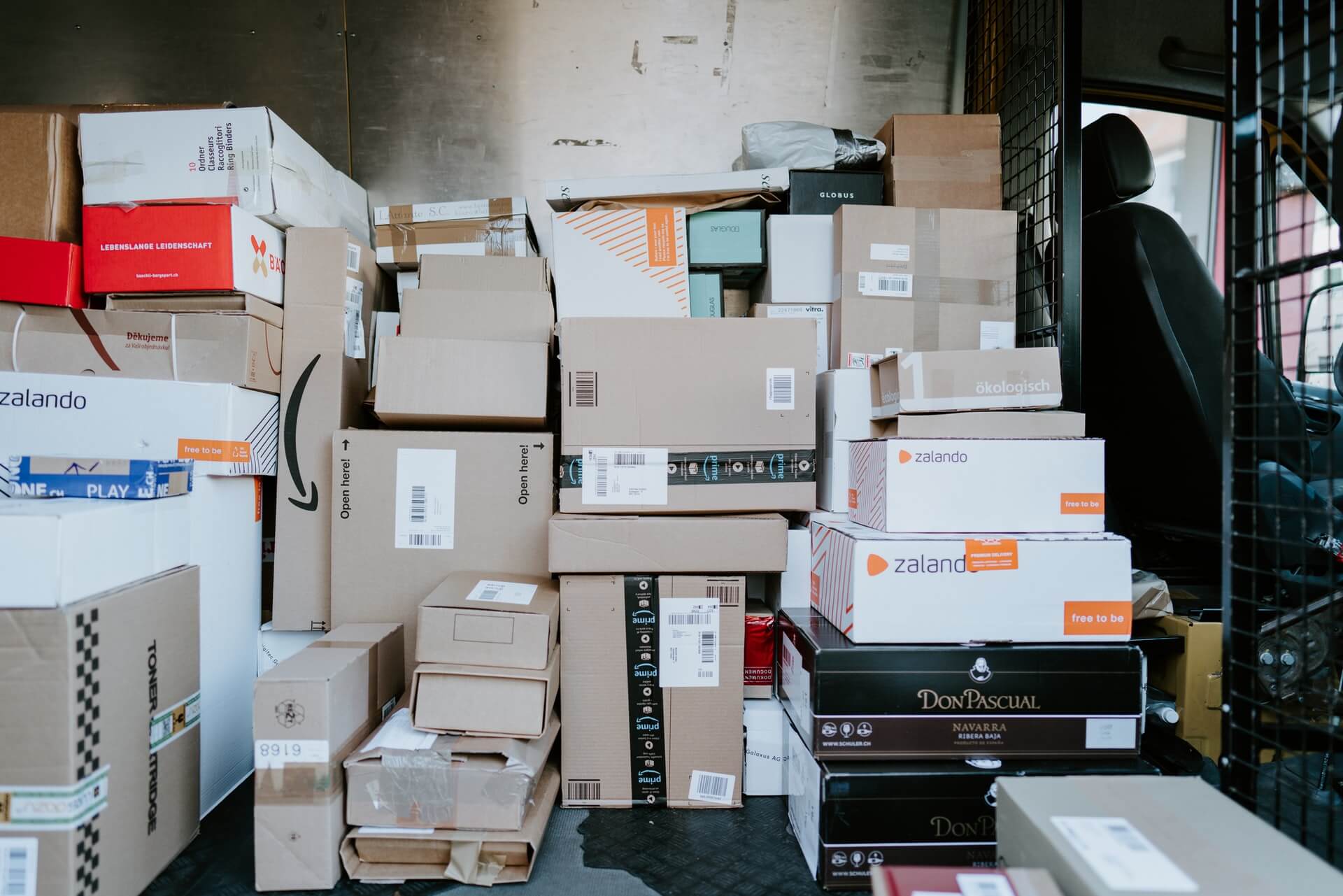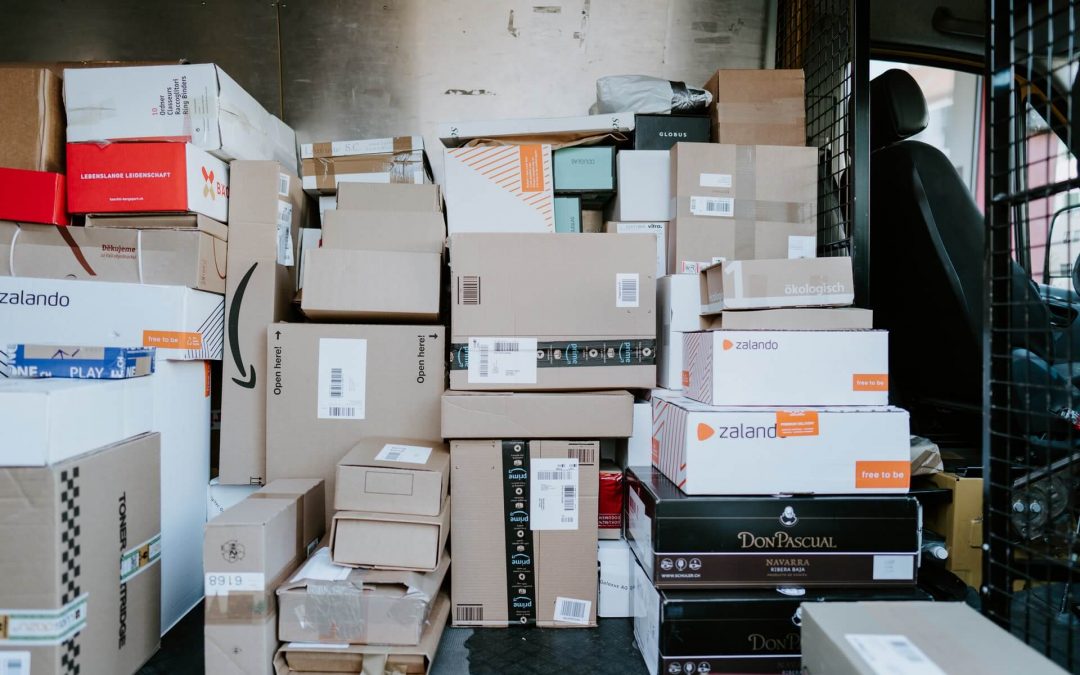Issues with lost parcels have soared since the UK went into lockdown
According to the dispute resolution service Resolver, the number of people complaining about deliveries quadrupled between mid-February and mid-April (1).
The most common complaint? An item has not turned up.
However, the challenge of managing large volumes of lost items and customer enquiries is not exclusive to the courier sector. Other industries, such as live music, higher education and transport, are taking innovative approaches when tackling their own lost property woes. Evidence suggests that similar techniques can be deployed to help courier companies reduce the operational burden and negative customer feedback caused by lost parcels.
3.65 billion
parcels are transported around the UK every year
0.5-3%
of parcels are marked as ‘lost’ or undeliverable by parcel delivery companies
‘Hidden costs’
to courier companies as a result from no quick and easy lost parcel management system

So, whilst the meteoric growth in parcel volumes continues – shown by an increase of 31% during the COVID-19 lockdown – what percentage of these items end up being deemed as ‘lost’?
The nature of the lost parcel problem makes it difficult to estimate, however some studies suggest that the loss rate could be as high as 3% (2).
One thing is for certain: the number of lost parcels is set to rise as our insatiable appetite for home deliveries increases. And with this rise, the cost to courier firms is set to increase.

“There is an ever-present issue within the parcel industry of ‘undeliverable’ or ‘lost’ packages that consumes a significant amount of time and resource.”
Neil Ashworth, Non-Executive Director & Advisor
Retailers and customers obviously expect their parcels to be delivered in a timely fashion, therefore there are significant costs associated with compensation when something goes wrong. Royal Mail handed out almost £7 million in compensation costs in the year 2018/19 (3).
Inbound lost parcel enquiries also put a heavy load on frontline customer service centres, with each enquiry costing anywhere between £8-15 to handle.
Lost parcels can also be a PR concern, potentially tarnishing the reputation of a courier firm or even the retailer itself. Recently, lost parcels have been at the route of an increasing number of negative PR stories, with the power of social media putting the spotlight on those who haven’t so far taken this issue seriously. For example, on a recent episode of Channel 4 show ‘Joe Lycett’s Got Your Back’, an investigation was launched into several missing parcels, only to find that they were being sold at an auction house” (4). Similarly, other public articles display the concern and distress felt by customers let down by their courier experience (5).
“A solution that addresses this issue would, I believe, be welcomed by many operators; particularly in these unprecedented times where sustained volumes are possibly amplifying the need for process improvements.”
Neil Ashworth, Non-Executive Director & Advisor

NotLost have identified a number of challenges that could be solved with a new innovative approach
No automatic matching
When labels and packaging are damaged, matching lost parcels with customer enquiries can become extremely difficult.
However, treating the items as ‘lost property’ and capturing information around what is contained within the parcels would mean that software could then be used to power automatic lost and found matching.
Difficulty when searching
Individual depots all have their own way to register and store ‘lost’ parcels and thing move quickly, with parcels constantly changing locations. Customer services teams have a difficult job when trying to locate a lost parcel that could be anywhere in the system.
It is proven that the faster an item is registered, in this case marked as a ‘lost parcel’, the more likely it is to be returned. Registration processes and system need to be reviewed from the ground up to reflect this, giving staff the tools they need to improve return rates.
Incomplete descriptions
Human error when inputting information is the number one reason for items not being reunited with their owners.
Techniques that minimise these risks, such as image recognition software, will save time on the ground and will speed up the matching process to improve return rates.
“The parcel industry runs with such tight margins that any proposition that takes cost out of the current process and ensures that more customers are delighted has got to be worth exploring.”
Neil Ashworth, Non-Executive Director & Advisor

In conclusion
By harnessing some of the approaches taken in other sectors, there is an opportunity for courier firms to begin solving these challenges and reuniting more customers with their missing parcels. This would have a knock-on effect on costs, customer satisfaction and overall staff wellbeing.
You can read more about how NotLost have transformed lost property management for the UK’s leading brands here. Plus, follow us on LinkedIn and Twitter to stay up to date with all things lost property!
References
- https://www.telegraph.co.uk/money/consumer-affairs/retailers-go-awol-shoppers-struggle-missing-late-deliveries/
- https://www.courierpoint.com/guides/info/lost-in-transit
- https://tamebay.com/2019/05/record-2-million-royal-mail-compensation-payouts.html
- https://www.dailymail.co.uk/femail/article-8253825/Hermes-couriers-caught-sending-packages-straight-auction-houses-three-four-times-week.html
- https://www.telegraph.co.uk/money/katie-investigates/hermes-lost-1k-parcel-wont-refund-rights/
